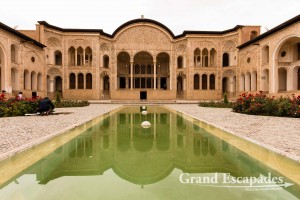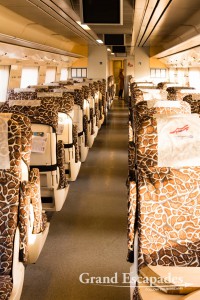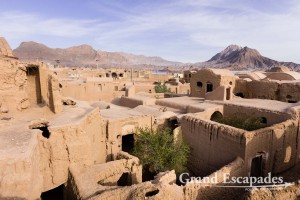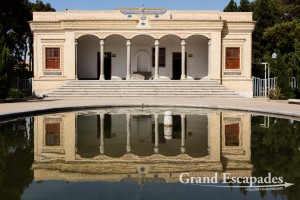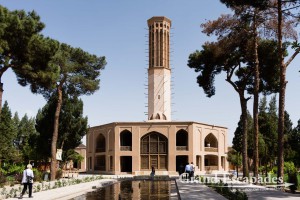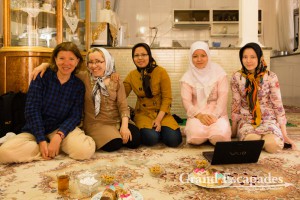 Our friend Jamshid left his home country Afghanistan in the 1990s via Iran and has lived in Vienna since then. Learning that we were traveling to Iran he arranged a meeting with his uncle’s family in Qom. His uncle, Mr. Asghari, is a clergyman who commutes between Iran and Afghanistan, where he teaches at the University of Kabul. Continue Reading →
Our friend Jamshid left his home country Afghanistan in the 1990s via Iran and has lived in Vienna since then. Learning that we were traveling to Iran he arranged a meeting with his uncle’s family in Qom. His uncle, Mr. Asghari, is a clergyman who commutes between Iran and Afghanistan, where he teaches at the University of Kabul. Continue Reading →
Archive | Middle East/Caucasus
Qom – Iran’s (Second) Vatican
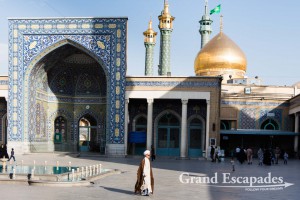
The Fatima Masumeh Shrine in Qom, for Shia Muslims the second most sacred city in Iran after Mashhad – The golden dome lies right above the mausoleum, Qom, Iran
The shrine of Fatima, sister of the 8th Iman, makes Qom the second holiest city in Iran, after Mashhad. This is conservative territory. All our Iranian friends were surprised when they we heard we were going there. This is where Khomeni lived and where the revolution against the Shah began. But we were too curious to leave out such a place and never regretted our decision, we would even claim it was a highlight of our trip. The shrine is huge with lots of different impressive buildings, stunning architecture. Inside pilgrims were milling around, men, women, families. Many of the walls are almost blindingly bright, small pieces of mirror form geometrical mosaics. All we could think off was how long it took to cover such vast spaces with tiny little pieces of glass, besides the word was flawless. Continue Reading →
Islamic Dress Code
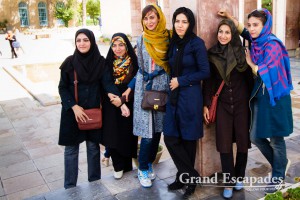 All the female tourists we talked to had worried about what to wear in Iran. Quite easy actually: baggy pants, a shirt that cover your hips and bum, very little cleavage, short scarf – otherwise most of it is wrapped around your neck and drives you crazy, especially in the heat. You are set, not matter where, in rural areas or in urban areas! Continue Reading →
All the female tourists we talked to had worried about what to wear in Iran. Quite easy actually: baggy pants, a shirt that cover your hips and bum, very little cleavage, short scarf – otherwise most of it is wrapped around your neck and drives you crazy, especially in the heat. You are set, not matter where, in rural areas or in urban areas! Continue Reading →
Abyaneh – Under The Rain
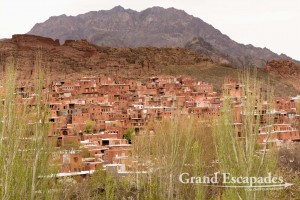 In every travel guide and in most hotels we would see breathtaking posters of a hillside village, red adobe houses on a hillside surrounded by greenery – Abyaneh. A must-see we figured and together with two travelers from New Zealand, we headed off in the early morning from Kashan. Continue Reading →
In every travel guide and in most hotels we would see breathtaking posters of a hillside village, red adobe houses on a hillside surrounded by greenery – Abyaneh. A must-see we figured and together with two travelers from New Zealand, we headed off in the early morning from Kashan. Continue Reading →
Kashan
Kashan is famous for its once-splendid traditional houses with their sunken gorgeous courtyards dominated by flowers beds, trees and a longish rectangular pool. A few have been renovated and we visited them all. Built by super wealthy merchants in the XIXth century, they feature everything from intricate stone relief, fine stucco, elegant mirrors and stained glass work. Again these visits turned out to be an excellent photo opportunity. Iranian tourists kept politely asking to have their photo taken with us. Continue Reading →
Riding The Train To Kashan
It is the journey that matters. Our train ride from Yazd to Kashan was just so very pleasant! Already when boarding the train in Yazd it was clear that this would be a superb experience. Helpful staff took us to our seat and helped with the bags. The carriage itself was very comfortable and the service exceptional. Tea and coffee was serviced, sweets and sandwiches, newspapers (in Farsi) waited in your seat and everybody was extremely friendly. We were the only non-Iranian on the train and our travel companions found our presence quite surprising. Continue Reading →
Ancient Meybod & Kharanaq
Heavily advertised in Yazd we could not resist spending a day and 95 USD (!!!) on this trip. We certainly paid way too much. The driver was organized by the manager of our hotel – the Oriental Hotel. An amazing person, who deserves to be mentioned here. He seemed to be the only person around and in command, always ready and answering endless questions and requests. Continue Reading →
Yazd’s Zoroastrian Past Temple
Who has ever seen a fire that has been burning for 4.000 years? We did when visiting the the Zoroastrian Fire Temple in Yazd. This eternal flame is said to have survived all this time and even the transfer from different temples. Flickering brightly behind a glass barrier – so it would not be polluted by human breath – it is the only attraction inside the simple building. The entrance is adorned with a winged figure, a few scripts and photos on the wall of the viewing room are the only décor. Continue Reading →
Caravanserai On The Silk Road
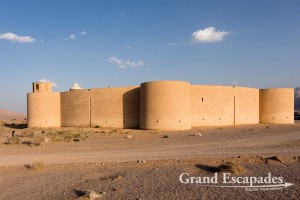
Robat-e Zayn al-Din Caravanserai, build by the Safavid government of Kerman on the Silk Road, Yazd, Iran
Zein- O – Din Caravanserai is a two-days camel ride outside of Yazd. In spring 2014, we covered the distance in a bit more than an hour – by car. Those ancient resting and trading places were built every 30 km, we were told. All of them were fortified with a high robust windowless wall. This was necessary, since the riches the caravans were carrying attracted intruders. Continue Reading →
Yazd – Catching The Wind
Old Yazd is a maze of mud brick houses all interconnected by passages that once used to be the alleys of an extended bazaar. Nowadays most shops are deserted and motorbikes noisily ride through the passages avoiding the traffic outside. Yazd can be extremely hot in the summer months, but ancient architects had a solution ready: Badgirs, or wind catchers on the roofs. These little towers on top of a building have slits on all four sides to catch the wind, take it down into the house, while the hot air is sucked out through the same system. At affluent households the incoming air was further cooled by a small pool of water, also moisturizing the bone-dry air. Continue Reading →

